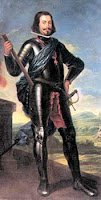 In 1580, King Philip II of Spain became the ruler of Portugal as King Philip I, following the death of the heirless King Sebastian I of Portugal two years earlier. A personal union between the two countries appealed to the Portuguese nobles, enabling Philip to see of the rival claimants to the throne. Portugal remained largely autonomous, administered by the Conselho de Estado (“Council of State”) in Lisbon, which advised a Spanish viceroy.
In 1580, King Philip II of Spain became the ruler of Portugal as King Philip I, following the death of the heirless King Sebastian I of Portugal two years earlier. A personal union between the two countries appealed to the Portuguese nobles, enabling Philip to see of the rival claimants to the throne. Portugal remained largely autonomous, administered by the Conselho de Estado (“Council of State”) in Lisbon, which advised a Spanish viceroy.
The accession of King Philip IV of Spain (Philip III of Portugal) resulted in a change of policy in Madrid. Under the influence of the Count of Olivares, Philip IV increased taxes in Portugal and gave government posts there to Spaniards in an effort to make Portugal a Royal province. The taxes mainly affected merchants, while the Portuguese nobility lost their power and influence.
In 1640, the Spanish demanded that a Portuguese army be raised to quell a revolt in Catalonia, creating further dismay among the country’s nobility and landowners. In response, a group of Portuguese aristocrats and gentlemen met at the house of Antão de Almada on 12th October. They included Miguel de Almeida, Francisco de Melo and his brother Jorge, Pedro de Mendonça Furtado, Antonio de Saldanha and John Pinto Ribeiro. The vowed to recover Portuguese independence and charged Pedro de Mendonça Furtado to contact the Duke of Braganza and offer him the crown.
On 1st December 1640, four bands of well-armed men attacked the royal palace. They killed Miguel de Vasconcelos, who was Secretary of State, and confined the Philip’s cousin, the Duchess of Mantua, who ruled on his behalf as Vicereine of Portugal. The coup attracted immediate popular support and the Duke of Braganza entered the city as King John IV of Portugal.
John was crowned on 15th December, but he had already set about making plans to protect his newly acquired throne, creating a Council of War four days earlier. The ensuing Portuguese Restoration War lasted nearly twenty-eight years, but did not escalate beyond border skirmishes and cavalry raids. In February 1688, John’s youngest son, Peter II, secured his monarchy and Portuguese independence when Spanish representatives and he signed the Treaty of Lisbon.

